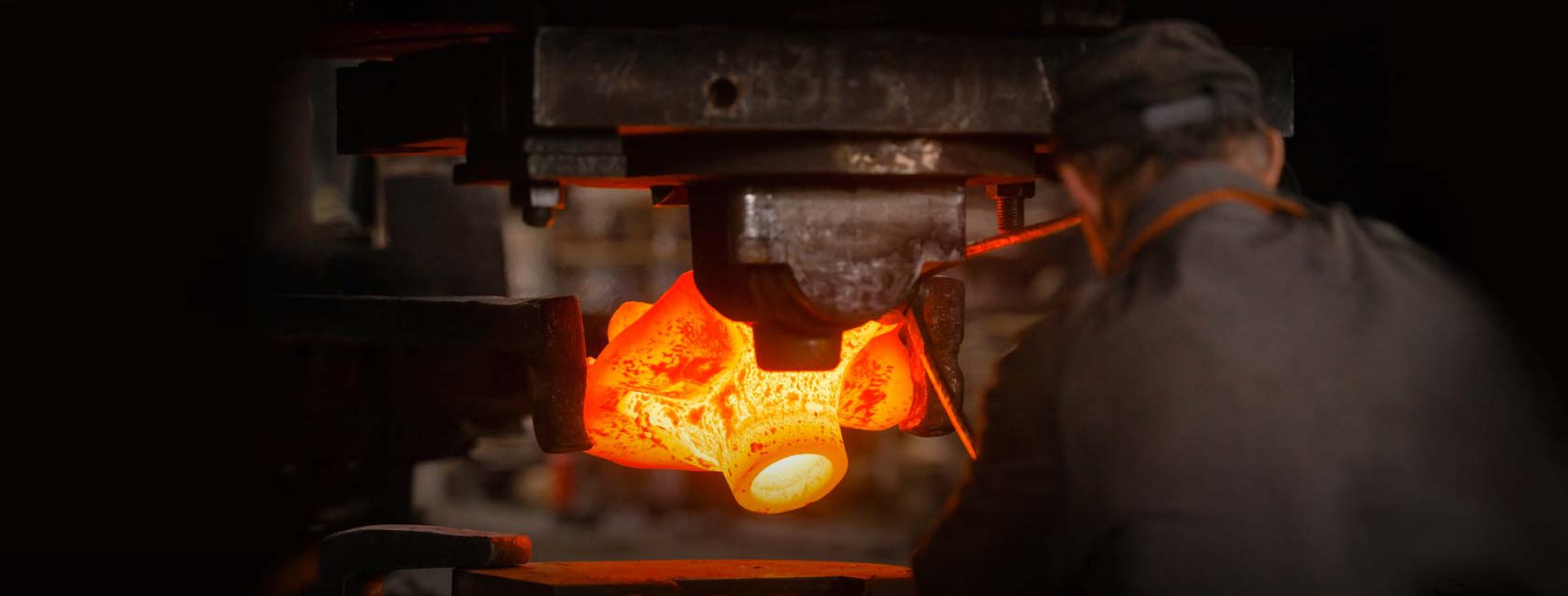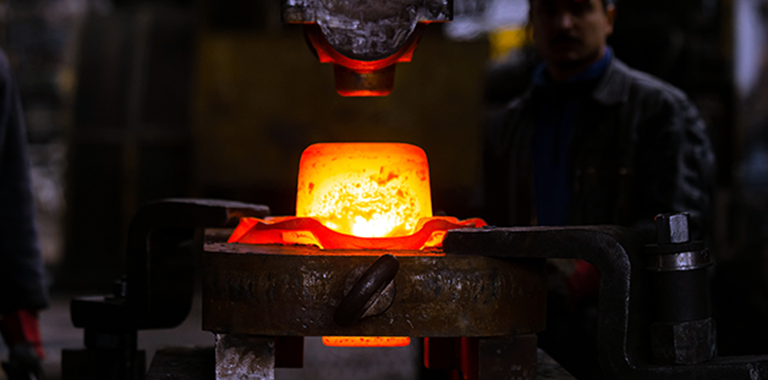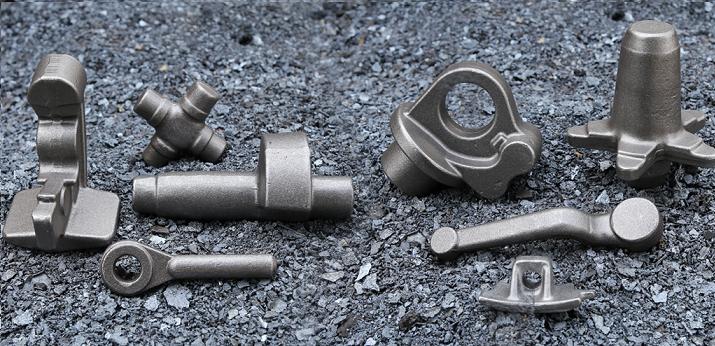According to the forging temperature, forging can be classified into hot forging, cold forging and warm forging. Most metal components intended to be forged are performed under hot forging.
Hot forging is the most widely used forging process. In hot forging process, forging is carried out at a temperature above the recrystallization temperature of the metal which means at the temperature at which the new grains are formed in the metal. This kind of extreme heat is necessary in avoiding strain hardening of the metal during deformation.
In real conditions during industrial manufacturing, friction plays a part in the process. Friction forces at the die-work interface oppose the spreading of the material near the surfaces, while the material in the centre can expand more easily. The result is to create a barrel shape to the part. This effect is called barreling in metal forging terms. Barreling is generally undesirable and can be controlled by the use of effective lubrication. Another consideration, during hot forging manufacturing process, which usually acts to increase the barreling effect, is the heat transfer between the hot metal and the cooler die. The metal nearer to the die surfaces cool faster than the metal towards the centre of the part. The cooler material is more resistant to deformation and expands less than the hotter material in the centre, also causing a barreling effect.
The Advantages of Hot Forging are:
- High strain rates and hence easy flow of the metal.
- Recrystallization and recovery are possible.
- Forces required are less.
Disadvantages of Hot Forging are:
- Lubrication at high temperatures is difficult.
- Oxidation and scaling occur on the work piece.
- Poor surface finish.
- Lesser precise tolerances.
- Possible warping of the material during the cooling process.
How to Indentify Hot Forging Process?
Hot forging occurs above the recrystallization temperature of a metal. The homologous temperature (TH) is used to distinguish it from the cold forging process (refer to hot forging vs cold forging).
TH = 0.6 x TS (TS: Melting temperature of the material – all figures in K)
If the process temperature is above TH, the process is defined as hot forging. This doesn’t necessarily mean that the material needs to be heated. In low-melting metals (e.g. lead), recrystallization occurs at room temperature.
The characteristic effect of hot forming, is the significant material strength reduction (yield stress) at temperatures above TH. The forming component becomes a “doughy” consistency.
Recrystallization – the new formation of the metal crystalline lattice structure – is responsible for this. Through the degradation of the existing strain hardening (dislocation density) in the metal, the mobilization of dislocations (thermal activation) and the interchanging recovery and recrystallization processes occurring during and after the forging step, it is possible to achieve very high formability. Thus, hot forging is used when the goal is to achieve complex 3D geometries via forming. In addition, it enables the processing of difficult-to-form materials, which can be formed only with limitations when cold. Due to the strength reduction under hot forging conditions, the force and work demand of the processes can be lowered in comparison to cold forming.
The recrystallization is responsible, through the complete reformation of the microstructure, possibly multiple times, for the formation of a relatively fine-grained microstructure. It exhibits the optimal combination of strength and ductility. This circumstance qualifies hot forging as one of the most important manufacturing processes for the production of highly stressed safety components.
Applications of Hot Forging
The recrystallization accompanying the high temperatures and enhanced formability enables a precise adjustment of very fine-grained microstructure. Strength-durability combinations can be specified more so than in any other forming process, qualifying hot die forging as a manufacturing process in all cases where high operating loads (static and dynamic) make special demands to the component. In general, such components are referred to as “Safety Critical Parts”. Consequently, the automotive and aerospace sectors represent the most important buyer markets for hot forgings.
Hot Forgings for the Automotive Application
Steel forging is predominantly used for automotive forging applications. Wrought aluminum alloys are on the rise due to the increasing lightweight construction demands; the use of magnesium is rare.
In the volume segment, components are forged in mostly small to medium series under closed die forging process. This enables the use of most automtive componets with high strength and working performace.
A number of typical automotive forgings are listed below. The examples are applicable for both passenger cars as well as commercial vehicles:
- Engine parts: piston, connecting rods, cams, camshafts, crankshafts, valves, distributor housings, balance shafts
- Driving gear: all types of pinions, synchronizer rings, CVT, …
- Powertrain: Flange yokes and peg carriers, wheel hubs, driving shafts, universal joints, joint discs
- Undercarriage: wheel carriers, axle journal, pivot bearings, axle stub, ball stubs, steering levers, steering levers, front axle beams, wishbones, …
- Brake system: Brake plates, brakes carriers, brake cylinders, brake handles
Hot Forgings for the Aerospace Application
- Fuselage components such as fittings for doors and wings, ribs, window frames
- Engine with turbine blades, propulsion cone, discs, control levers
- Fittings and guide rails for the empennage
- Landing gear: carrier, fasteners, pins
- Rotor systems: fittings, rotor head, gearbox cover
In the aerospace sector, besides steel forgings, high-strength and temperature resistant special materials such as nickel-based and titanium alloys are used, as well as lightweight construction materials such as wrought aluminum alloys and magnesium.
Additional Application Fields
Hot forging is not limited for automotive and aerospace applications. Furthermore, there are also some other important application fields in which hot forgings can showcase their strengths:
- Construction industry
- Mechanical engineering
- Agriculture
- Defense industry
- Steel construction
- Offshore Industry
- Sanitary sector
- Precision engineering and watchmaking industry
CFS Forge is the professional steel hot forging company. All our hot forgings are mainly exported to USA, UK, Australia, Canada, South Africa, etc. Contact us if you have any hot forging project.



